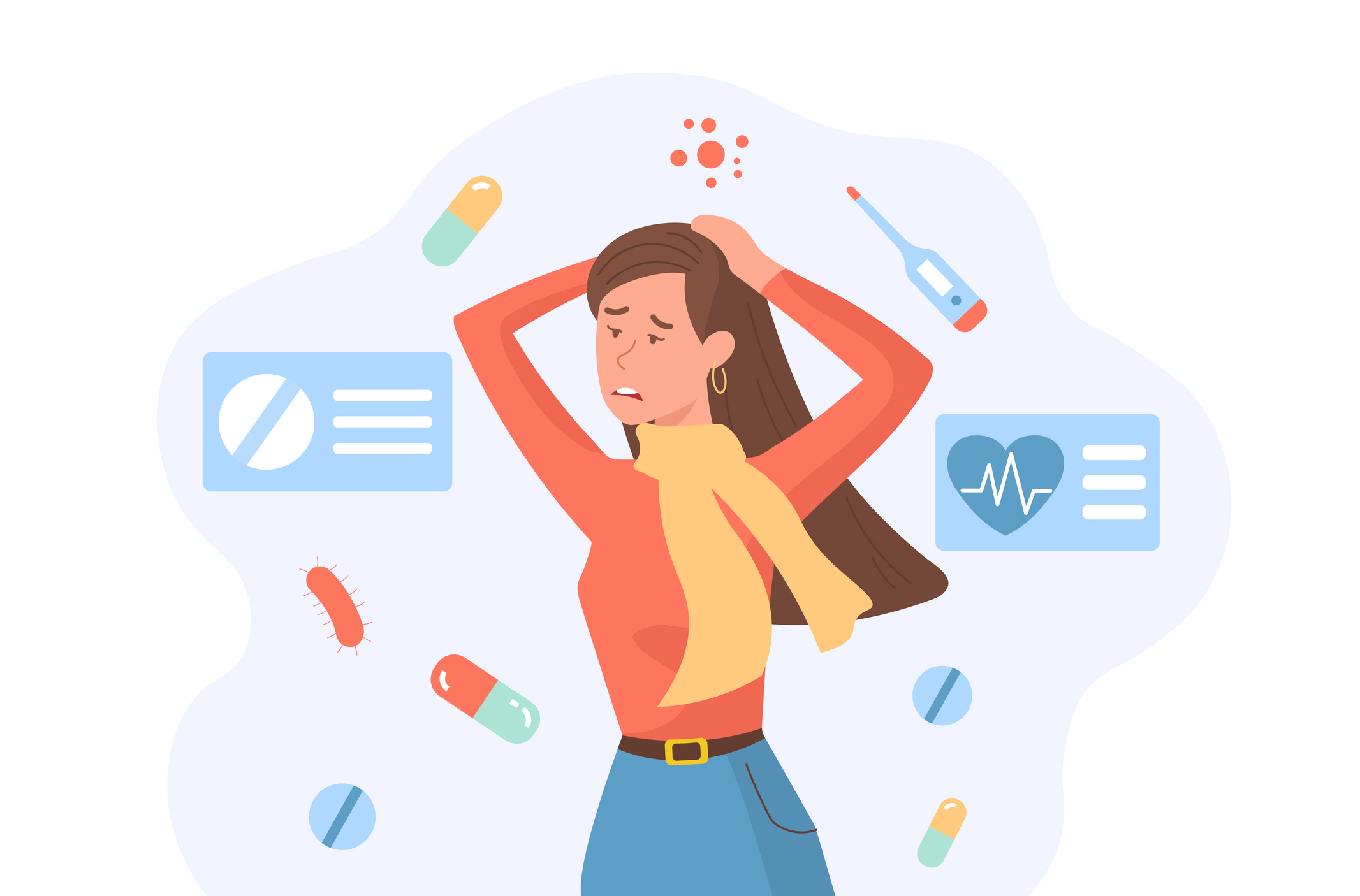Even if your ex-boyfriend exhibits a “general pattern of grandiosity, need for flattery, and lack of empathy,” as the DSM-5 (Diagnostic and Statistical Manual of Mental Disorders) puts it, it does not mean he’s a narcissist, says Aly Semigran. She also explains that it has become common to use mental health terminology in inappropriate contexts, leading us to diagnose and catalog the people with whom we interact.
Mental Health on the Internet
Until recently, going to a psychologist or psychiatrist was something that, at least in Mexico, was stated quietly. Mental health was a topic not discussed, and most of the time, the treatment was to stay busy.
However, the information shared on social media has helped raise awareness and break the stigma, changing how we view these diseases and, above all, the people who suffer from them. Now, more people increasingly turn to these platforms to understand their mental health better.
Sapna Kappa addresses the different advantages and disadvantages of this social awareness movement on social media:
Advantages
- Helps build community: Social media helps people not feel lonely, connecting them with others who may be experiencing the same things.
- Truthful information is available: Various health professionals leverage social media to disseminate reliable information, creating safe user spaces. It is essential to find these trusted sites.
- Helps reduce stigma: Seeing people talk about their experiences helps promote dialogue and reduce stigma.
Disadvantages
- It promotes selective harassment: Anonymity on social networks facilitates harassment, primarily of vulnerable people, which can further affect their mental health.
- Disinformation: Although it is possible to have access to quality information, anyone can share false information without going through any filter.
- Promotes self-diagnosis: The need to feel understood and the large amount of available information can lead to self-diagnosis.
Although the new generations are more aware of the importance of mental health and have turned it into a collective dialogue, this situation has promoted self-diagnosis and a poor understanding of complex topics and concepts. Their familiarity with terms and symptoms has led to an over-identification of mental disorders, as people turn to them in an attempt to understand their emotions and behaviors.
According to Sofía Sánchez for La Tercera (The Third), some content related to mental health tends to discuss things “in a very stigmatizing and pathologizing way.” She also adds that social networks have changed how adolescents perceive themselves and the world, as they need to identify and relate to the content they consume.
The Cyberchondria of Mental Health
Researching our symptoms is a habit older than the internet: People have looked up their symptoms since the existence of encyclopedias and medical books. However, the advent of the World Wide Web has made researching easier. The habit of this behavior can be considered digital hypochondria or cyberchondria, a term gradually adopted into everyday language.
This digital hypochondria or cyberchondria is excessive “preoccupation with health and imagining symptoms that aren’t real.” After all, googling is simpler (and cheaper) than going to the doctor, giving people a false sense of control.
In the words of Karla Arango, “Mental health self-diagnosis refers to a person’s practice of identifying and labeling their mental health problems or disorders without formal evaluation or diagnosis by a mental health professional, such as a psychologist or psychiatrist.”
Have you taken the Pooh test? It has hundreds of pages of self-assessment tests. Although the test creators emphasize that the assessments are only indicative and do not provide a medical diagnosis, that explanation masks the attitude underlying the assessments, and the tests validate the users’ feelings. This same legend commonly appears when googling different symptoms or medications: “This information is for informational purposes only. Consult your local medical practitioners for advice.”
As if that were not enough, TikTok has more than 1,218 million users worldwide to date, exemplifying how social networks are the primary means of communication and access to information.
Sociologist Joseph E. David says social media such as TikTok and Instagram encourage self-identification of various disorders. In 2021 alone, the TikTok hashtag ADHD (Attention Deficit Hyperactivity Disorder) attained more than 2.7 billion views; Tourette’s syndrome, 2.5 billion; and dissociative disorder, 1.5 billion.
This circumstance is solidified through an algorithm: The more the user searches content on the same topic, the more consistently it appears to them as a suggestion. This can lead people, especially younger people, to enter a loop that alters their perception of reality.
This trend is not limited to the United States, as young Latin Americans have also turned to self-diagnosis. Distintas Latitudes (Different Latitudes) points out that this problem is prevalent in Latin America and the Caribbean, as depression and anxiety account for 46% of mental disorders in young people between 10 and 19 years of age, the same group who use TikTok as their primary search engine and receive false or misleading information. The text of Distintas Latitudes shares various testimonies of young people exposed to this situation.
Anabel Herrera, in an article published in La Vanguardia, states that although the hypochondriac phenomenon is not new, the medical content that was previously reviewed in books and encyclopedias tended to be more truthful because they came from specialized sources; now, more effort is required to verify whether the sources on social media are trustworthy.
“There’s a big difference between the information posted by a primary medical source like Johns Hopkins or a person on their YouTube channel.”
Jessica Rendall
The increase in this trend
The well-known information age has made it easier to access various online resources, yet few platforms verify the information they share.
The psychologist Sara González states that young people assume these conditions and claim them with personal labels without having received an official diagnosis or treatment. She adds that self-diagnosis in mental health is increasingly evident, caused by a combination of psychosocial, cultural, and economic factors and facilitated by access to information without accountability.
Dr. Joseph E. Davis states in Psychology Today that the contents that get the most views and become the most influential addresses the authors’ personal experiences. In addition, the growing trend of influencers and parasocial relationships also promotes the increase in self-diagnosing. According to an article by Beatriz Benéitez Burgada in La Vanguardia, having thousands of followers and being a public figure makes a person a trusted reference when they are not.
The ambiguity with which terms and symptoms are used and described means that many people can see these reflected in themselves. This simplification leads to a poor understanding of the various (and complex) concepts and conditions. As if that were not enough, it promotes stigmatization because this information reduction encourages stereotypes. Approaching the topic with humor can be beneficial, but emphasizing cliches can reinforce stigmatism.
However, it is not right to point the finger and blame individuals who self-diagnose, as it is also necessary to highlight the almost total neglect of mental health by different institutions and governments. This trend is steepest in places lacking access to psychological treatment, causing people to “come together to survive.”
In a BBC Science Focus publication, Dean Burnett points out that while it is okay to ask for help, not all help is valuable. In addition, the precariousness of access to these types of mental health services promotes these negative attitudes.
Another factor that has encouraged self-diagnosis is the emergence of non-specialist coaches and therapists and the substitution of artificial intelligence for medical practitioners. According to Mariana Jiménez, “The chatbot can be a portal for those people who need to talk about sensitive topics without revealing their identity, creating a space to vent and feel heard (or read) anonymously. In addition, creating an account with ChatGPT is completely free.”
Why is self-diagnosis wrong?
Diagnosing mental illness is a complicated topic where even mental health professionals can make mistakes. Therefore, in self-diagnosis, people who are not professionals can make errors of interpretation that result in an altered perception of the various disorders.
One simple example is hyperactivity: many could initially associate it with Attention Deficit Hyperactivity Disorder; however, it can also be a symptom of Bipolar disorder in the manic phase, and inattention can also be triggered by anxiety or depression. In other words, the characteristic symptoms of ADHD are not exclusive to it.
According to The Mind Coach, a page dedicated to ADHD and mental health awareness, “Self-diagnosing is like walking in the dark, blindfolded. It leads you to make careless mistakes that can affect your ability to function well in your daily life. Hence, an accurate diagnosis and medication (if necessary) should be a priority.” It adds that diagnosing is a process.
Not only that, self-diagnosis can lead to unnecessary medication or self-medication. Additionally, it is capable of delaying or preventing appropriate treatment, which, in the worst-case scenario, could be fatal.
Finally, different specialists suggest using the word appropriation instead of self-diagnosis, as it is a more convenient term for this practice. According to “Alma, Corazón, Vida” for El Confidencial, “You can’t make a diagnosis when there is no qualified personnel.”
What to do as tutors or educators?
It is impossible to block access to this type of information, so it is up to us to guide and promote the appropriate use of information and foster digital literacy by evaluating the quality of the content consumed. After all, as Arango says, searching for information and self-identification “is the first step toward self-care.”
I want to highlight that the Internet and social networks are good tools to learn more about these issues. Demonizing dialogue or those who search for information to understand themselves better only backfire. In 2018, with a full-time job and about to finish a bachelor’s degree, I began to realize that certain aspects I considered to be part of my personality fit very closely with Attention Deficit Hyperactivity Disorder. However, despite my suspicions, an expert did not formally diagnose me until 2020.
To this day, the medication helps me perform and live a better life. However, more than the treatment, the diagnosis helped me to be gentler with myself, as it led me to accept and understand that I was not lazy or distracted (stereotypes that haunt people with ADHD), but, instead, there was a chemical imbalance in my brain.
The boom in information about Attention Deficit Hyperactivity Disorder that existed on social media during those years helped me to become informed, understand myself, and, finally, get the necessary treatment.
Beyond condemning this behavior, communicators and teachers must also take some responsibility and adequately guide those who feel identified by the information they have at their fingertips. Advocating for early care, correctly diagnosing, and disseminating quality information can change the lives of many people, provided, of course, that it comes from the specialists.
Translation by Daniel Wetta
This article from Observatory of the Institute for the Future of Education may be shared under the terms of the license CC BY-NC-SA 4.0 
)
)


)